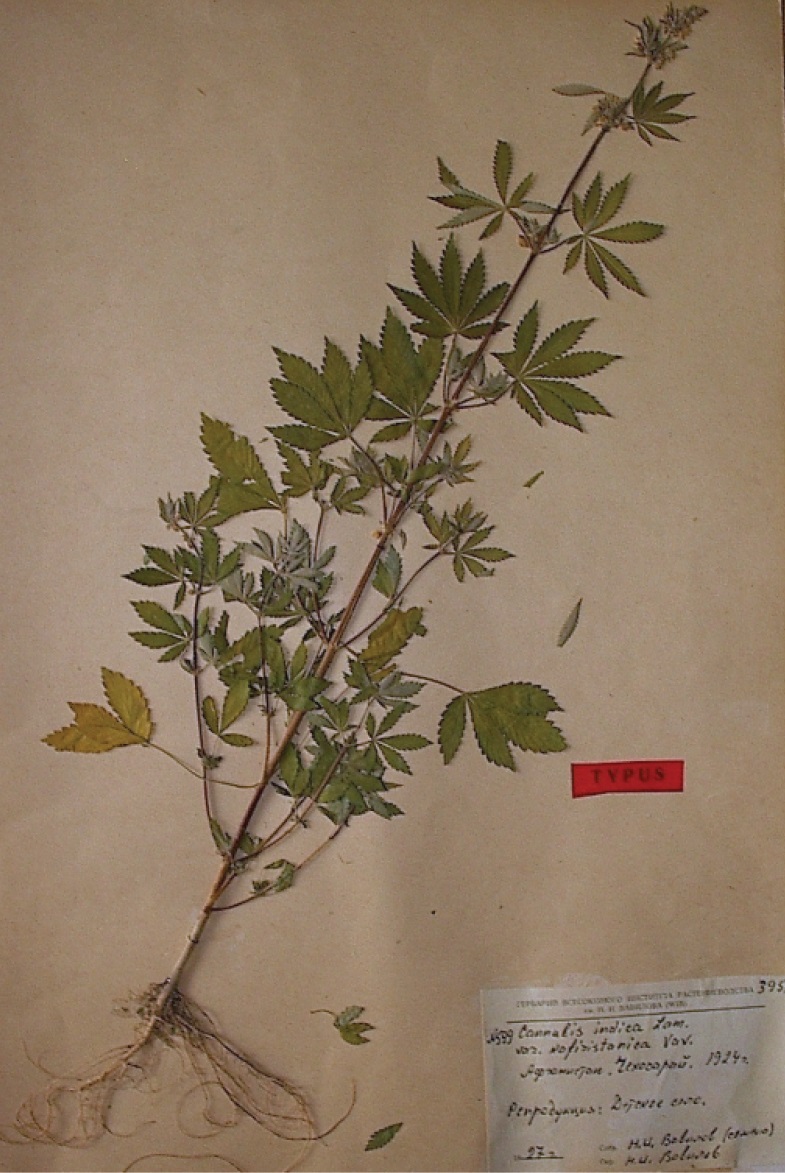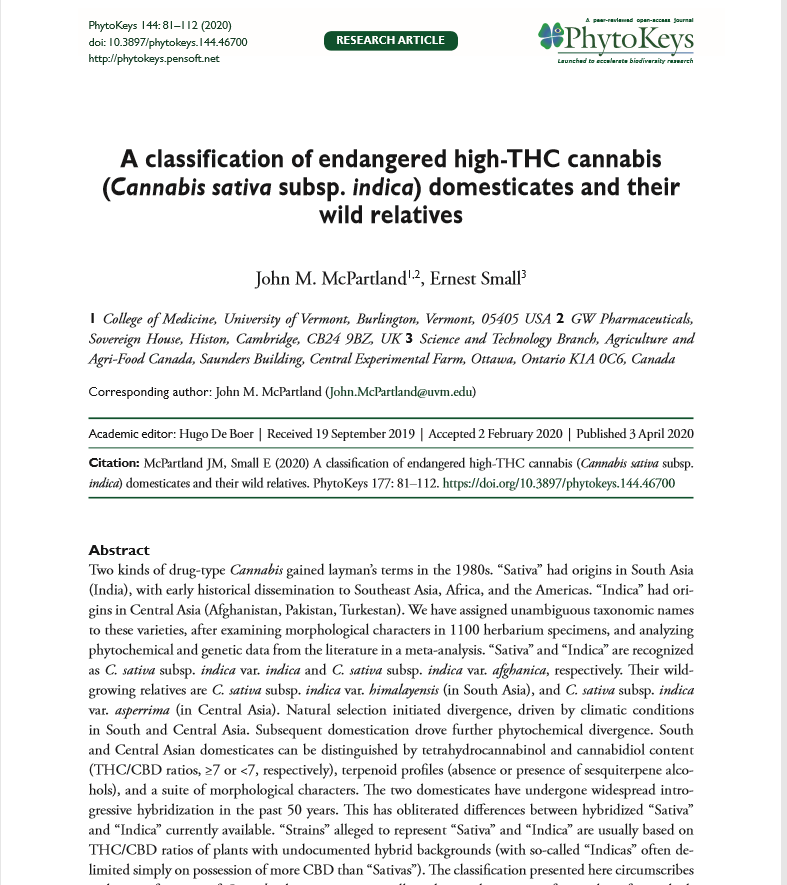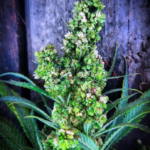The study, published April 3rd 2020 and entitled A classification of endangered high-THC cannabis (Cannabis sativa subsp. indica) domesticates and their wild relatives, is available for download here.
The abstract is as follows:
Abstract
Two kinds of drug-type Cannabis gained layman’s terms in the 1980s. “Sativa” had origins in South Asia (India), with early historical dissemination to Southeast Asia, Africa, and the Americas. “Indica” had origins in Central Asia (Afghanistan, Pakistan, Turkestan). We have assigned unambiguous taxonomic names to these varieties, after examining morphological characters in 1100 herbarium specimens, and analyzing phytochemical and genetic data from the literature in a meta-analysis. “Sativa” and “Indica” are recognized as C. sativa subsp. indica var. indica and C. sativa subsp. indica var. afghanica, respectively. Their wild-growing relatives are C. sativa subsp. indica var. himalayensis (in South Asia), and C. sativa subsp. indica var. asperrima (in Central Asia). Natural selection initiated divergence, driven by climatic conditions in South and Central Asia. Subsequent domestication drove further phytochemical divergence. South and Central Asian domesticates can be distinguished by tetrahydrocannabinol and cannabidiol content (THC/CBD ratios, ≥7 or <7, respectively), terpenoid profiles (absence or presence of sesquiterpene alcohols), and a suite of morphological characters. The two domesticates have undergone widespread introgressive hybridization in the past 50 years. This has obliterated differences between hybridized “Sativa” and “Indica” currently available. “Strains” alleged to represent “Sativa” and “Indica” are usually based on THC/CBD ratios of plants with undocumented hybrid backgrounds (with so-called “Indicas” often delimited simply on possession of more CBD than “Sativas”). The classification presented here circumscribes and names four taxa of Cannabis that represent critically endangered reservoirs of germplasm from which modern cannabinoid strains originated, and which are in urgent need of conservation.
The photo below shows the type specimen for Cannabis sativa subsp. indica var. asperrima. Originally, this was the type specimen for Vavilov’s proposed taxon C. indica var. kafiristanica.

Type specimen for Cannabis sativa subsp. indica var. asperrima






